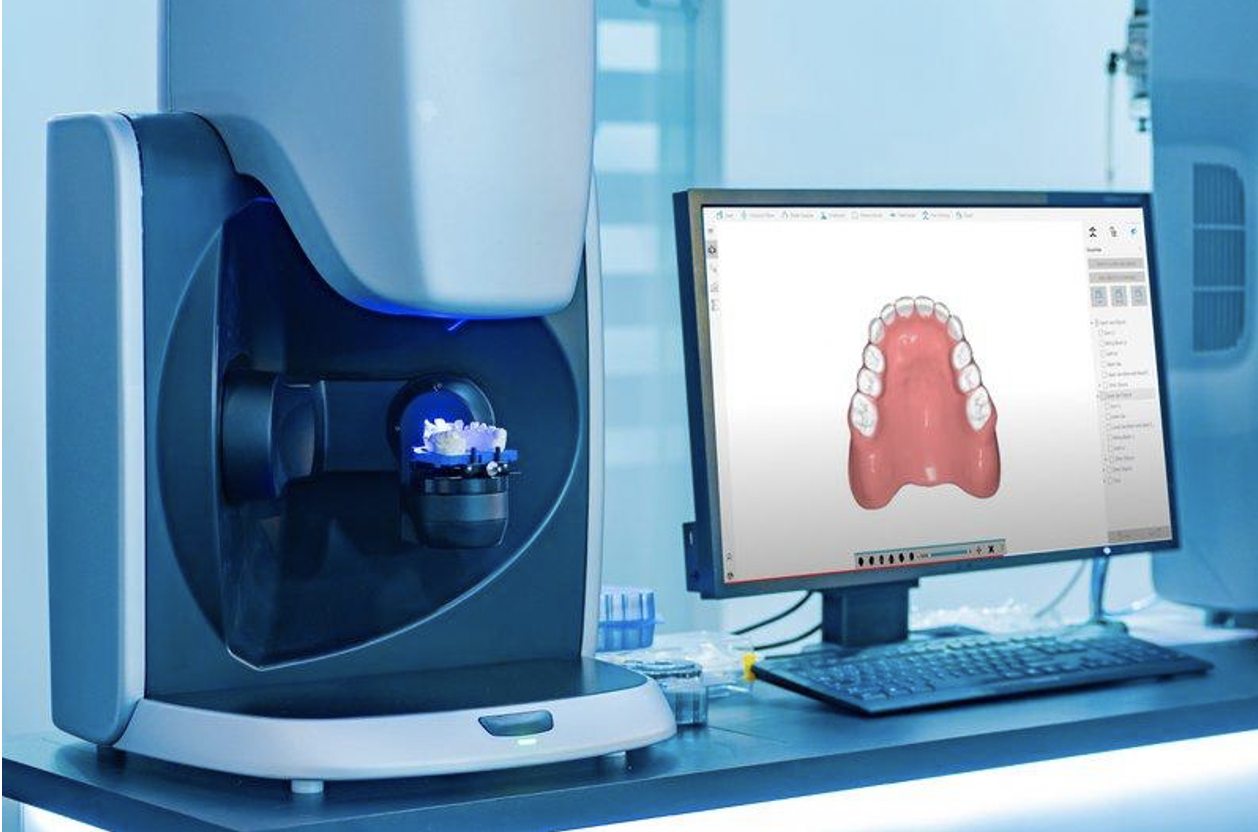The introduction of digital denture technology has revolutionized the way clinicians design and manufacture dentures. It’s faster, reliable, more efficient, and lets one create dentures that provide better fit and comfort. Contemplating adding digital dentures? This is the right time. Already an adopter of digital technology? Always consider choosing a digital denture system that could easily be integrated into an existing dental technology already in use.

Dental technology is in a constant state of evolution and advancement. From mini implants to regenerative dentistry, various modern innovations are helping shape the future of dental and denture technology. For the dental community, the ultimate value of the use of technology is the ability to thrive, in most cases, increased profitability. Both practices and dental labs appreciate dental technology for this value. For patients, this means improved quality of care for a better quality of life.
One of the most popular developments in dental technology is the ability to design and manufacture dentures digitally, resulting in digital dentures. Digital denture software (CAD/CAM) and output equipment (i.e., milling machines, 3D printers) have made it possible to manufacture accurate, natural-looking, and well-functioning dental prostheses for patients in as little as two dental appointments.
For clinicians, recommending digital dentures can go a long way in helping provide their patients with an improved quality of life. For dental labs, adopting digital denture technology enables them to be more productive and provide practice-building solutions to the dentist.
Digital dentures are the new smile replacement standard for esthetics and convenience. With anything new, however, it’s natural to be skeptical about making the switch. Even when the decision to transform is made, finding the right digital denture solution is still a challenge.
WHAT IS A DIGITAL DENTURE?
Simply put, a digital denture refers to prosthetic teeth manufactured using digital scans and technology. The workflow typically involves the use of intraoral scanners, design software (such as CAD/CAM), milling machines or 3D printers.
The advent of digital denture technology has significantly transformed the quality, and reliability of dentures. As a workflow aid, it leverages the power of automation to quickly design and build dentures that provide better fit and comfort.
WHY SHOULD I CHOOSE DIGITAL DENTURES?
Digital dentures offer a wide array of benefits to both dental practitioners and patients. These dentures help to overcome the major drawbacks of conventional dentures, for the patient, primarily multiple appointments and adjustments as well as inconsistent quality.
1. Fewer Dental Appointments
With digital denture technology, a dentist can make a patient’s prosthetic teeth available in as little as two appointments. Most of the work happens in the first patient appointment where impression making and bite registration are done.
The second patient appointment is simply incorporation -- fitting, making sure the dentures feel right, are secure, and look good. This is in sharp contrast to conventional dentures, which typically take multiple appointments for making records, try-ins, and adjustments.
2. Fit and Comfort
Digital dentures involve the use of scanners to either digitize conventional patient records or directly scan the patient intraorally to obtain accurate data of a patient’s mouth. These records are very reliable and are then used to design the denture with increased confidence.
3. Esthetic
Digital dentures come in a range of gingival and teeth shades to suit every patient. Owing to the accuracy of the process and the artistic skill of the dental technician, natural-looking, good-looking teeth can most certainly be expected as an outcome, that gives the patient a natural and confident result.
5. Reproducibility
This is likely the biggest benefit to patients who will opt to wear digital dentures. For most patients, the idea of going back to the dentist when their denture needs to be replaced is less than ideal. Because digitally designed and manufactured dentures have permanent digital records stored, the denture is easily reproduced quite often without needing the patient to go back for a second impression-making session, unless previous conditions have significantly changed.
HOW DOES DIGITAL DENTURE TECHNOLOGY WORK?
The typical digital denture workflow involves three main steps:
Intraoral scanning to make dental impressions or extraoral scanning from a cast with bite registration or impression from an old denture
Transferring the data to a CAD/CAM software to design a computerized model of the denture
Manufacturing the actual denture using a milling machine or a 3D printer
Communication of the patient’s esthetics and intraoral information is the most crucial part of creating digital dentures. This is the step that sets digital denture technology apart from conventional dentures. It involves recording precise measurements of the patient’s inter-jaw relationship.
A specialized design software solution, such as BD Creator® PLUS, is used to generate a digital design proposal of the denture. Then, it can be programmed and manufactured either by the use of a milling machine or 3D printer, out of their respective digital denture materials.
KEY CONSIDERATIONS FOR ADOPTING DIGITAL DENTURE TECHNOLOGY
There are many on the market today and vary greatly from the ease of use to materials and methods used. Popular examples of digital denture systems include Ivoclar Ivotion, Dentca, AvaDent Digital Dentures, the Carbon 3D Digital Denture, and the Baltic Denture System.
This denture technology should be simple, easy-to-use, and compatible with any other form of dental technology already in use. Ideally, it should let a clinician complete the entire design process in 10 minutes to maximize efficiency and profitability.
CONCLUSION
The introduction of digital denture technology has revolutionized the way clinicians design and manufacture dentures.
It’s faster, reliable, more efficient, and lets one create dentures that provide better fit and comfort. Contemplating adding digital dentures? This is the right time. Already an adopter of digital technology? Always consider choosing a digital denture system that could easily be integrated into an existing dental technology already in use.
Contact Sterngold Dental today to learn more about digital dentures and the denture technology available.
